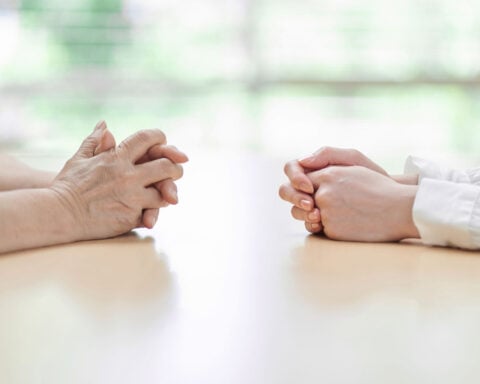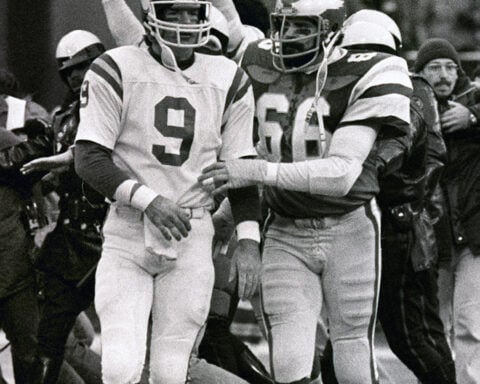A concerning new body of research shows that eating disorders and disordered eating behaviors in men have reached epidemic proportions, now impacting millions of American males across backgrounds.
Analyzing federal health surveys over two decades, a 2022 study in the American Journal of Men's Health estimates that 10 million boys and men nationwide will experience an eating disorder at some point - equal to the female incidence rate. That disturbing parity spotlights insufficient awareness and resources dedicated towards male-specific risks, diagnoses, and treatment, given outdated cultural biases positioning eating disorders as afflicting mainly young, thin white women.
"The assumption among men, and even many doctors, that eating disorders primarily affect women may lead to missed diagnoses," notes the non-profit National Eating Disorders Association. Often seeking to attain unrealistic masculine physiques rather than thinness, men frequently deny or downplay symptoms until conditions become life-threatening across physical, social, and emotional health.
According to mental health non-profit Mirror Mirror, recent admissions from celebrities like Olympic diver Tom Daley and Marvel actor Kumail Nanjiani have begun de-stigmatizing male body image struggles by illuminating pressures striving for the extreme muscular ideal perpetuated through male pop culture.
Although different attitudes drive male disorders, devastating impacts look similar across genders - depression, social isolation, and multi-system organ failure. While warning signs get dismissed as normal masculine behavior, studies confirm men experiencing body image disorders in fact, suffer higher mortality rates.
So advocacy groups now declare a better understanding of male manifestations of conditions like anorexia or bulimia urgent to spur public health response equal to female-focused efforts. "We have to make the invisible visible," argues Dr. Stuart Murray, chairperson of Eating Disorders International.
The obstacles begin with diagnosis, where male patients still fall through the cracks. "Medical professionals receive little training to spot eating disorders in men," reports the non-profit advocacy group Project HEAL. Estimates suggest just one-fourth of male cases get flagged for treatment given ingrained healthcare biases.
Thus, millions struggle privately without support as cultural myths persist around eating disorders solely afflicting thin females. "The stereotypical presentation for males is still muscle dysmorphia - big burly men obsessed with getting bigger," Dr. Jason Nagata of UC San Francisco told Good Morning America regarding outdated provider conceptions. "So males focused on losing weight or thinness may be missed."
But NEDA now confirms men account for a full quarter of both anorexia and bulimia cases, with binge eating also rising faster across male groups. A Finnish study found seven percent of men surveyed already exhibit some disordered eating patterns - including behaviors like compulsive exercise, food restrictions, or use of laxatives.
Even more concerning, multiple reports reveal such habits now commonly begin in boyhood. A new 9-10-year-old survey showed disordered eating incidence matching girls, countering assumptions around strictly teen female vulnerability. Researchers warn that failure to expand early screening risks cementing damaged relationships with food and exercise in the long term.
For Steve Walk, disordered habits that began alongside wrestling in high school continued largely unaddressed into his 50s before finally securing treatment. He channeled hyper-discipline into his career but sees now isolation and unhappiness disordered behaviors fueled. "It robbed me of self-compassion I could have offered myself and others," he reflected.
The restrictive fitness culture permeating male spaces has drawn particular criticism for normalizing excessive exercise and supplementation almost as rites of masculinity. But beneath the mass muscle movement lies a genuine crisis; studies show muscle dysmorphia, called Bigorexia, impacts up to one million American men epitomized by whey protein-chugging gym bros.
Yet perhaps the most at-risk male demographic remains the LGBTQ community, with gay and trans men facing amplified appearance pressures from multiple angles Irish mental health professional Dr. Dasha Nicholls observes. "Sometimes gender dysphoria can transfer to eating disorders," she told BBC regarding the desire to be thinner to present as more masculine.
Data backs her contention. A recent research review found gay and trans men respectively four and fifteen times more likely to report eating disorders than straight men. And a landmark 2019 study of 289,000 college students determined over 15% of trans students suffered an eating disorder - dwarfing the less than 2% incidence among straight female peers.
With male body issues largely still relegated to shadows, advocates want messaging targeting youth expanded to encompass muscularity as well as thinness goals given parallel risks. And greater transparency from male public figures detailing private struggles offers hope.
"It's now looking through the right lense - understanding men and boys do get eating disorders for reasons sometimes different from women,” says Dr Nicholls regarding gradual shifts in collective consciousness. “Then we can develop appropriate treatments."
As gender biases fade, renaming muscle dysmorphia as simply 'body dysmorphia' may aid acceptance muscle obsession operates through identical reward pathways as any disorder. Similarly, substituting loaded terms like 'anorexia' with more inclusive “restrictive eating” opens doors to help without shame for male sufferers.
Altering clinical terminology also assists reducing stigma that discourages male patients from admitting disordered habits. "Wanting supportive relationships but fearing others seeing you as weak creates terrible pressure," noted one anonymous sufferer. Just declaring "I have an eating disorder" proves profoundly difficult absent absolute crisis for men ingrained to project strength - delaying intervention.
So, while raising public awareness helps, positive change relies on healthcare professionals proactively questioning men about diet and exercise instead of waiting for them to volunteer problems. "Early reassurance this happens to others, is nobody's fault and highly treatable facilitates progress," encourages Dr. Nicholls.
Though no panacea, expanding conversational space encouraging men to articulate struggles safely promises progress, lessening bottled inner turmoil demanding outward perfection. And culture shifting male physical ideals away from cartoonish muscularity eases pressure chasing unrealistic bodies - preventing untold suffering and detaching young men from innate humanity.
"We have to bring compassion to the table and understand anyone can develop an eating disorder,” Steve Walk implores regarding the newly visible male health emergency. “Then we can have open discussion about what real health means for both men and women.”

 Azerbaijan observes day of mourning for air crash victims as speculation mount about its cause
Azerbaijan observes day of mourning for air crash victims as speculation mount about its cause
 Pope opens special 'Holy Door' for Catholic Jubilee at Rome prison
Pope opens special 'Holy Door' for Catholic Jubilee at Rome prison
 Japan's Nippon Steel extends closing date for U.S. Steel acquisition
Japan's Nippon Steel extends closing date for U.S. Steel acquisition
 Kazakhstan's senate chief: cause of Azerbaijan Airlines plane crash unknown for now
Kazakhstan's senate chief: cause of Azerbaijan Airlines plane crash unknown for now
 Thousands mark 20 years after deadly Indian Ocean tsunami
Thousands mark 20 years after deadly Indian Ocean tsunami
 BYD contractor denies 'slavery-like conditions' claims by Brazilian authorities
BYD contractor denies 'slavery-like conditions' claims by Brazilian authorities
 China revises up 2023 GDP to $17.73 trln, rules out impact on 2024 figure
China revises up 2023 GDP to $17.73 trln, rules out impact on 2024 figure
 Durant and Beal score 27 points each, Suns beat Nuggets 110-100 to close out Christmas slate
Durant and Beal score 27 points each, Suns beat Nuggets 110-100 to close out Christmas slate
 Eating Disorders Striking Men as Often as Women
Eating Disorders Striking Men as Often as Women






